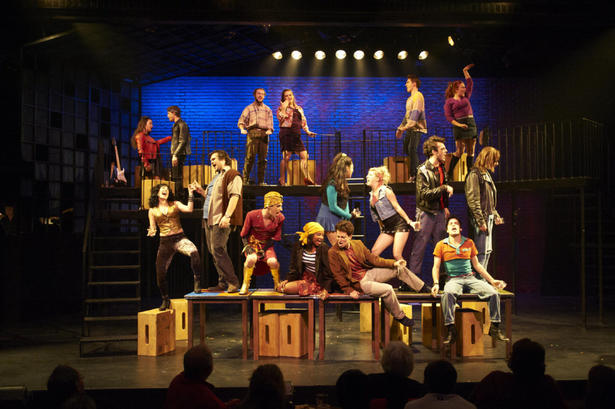STORY BY LINDA HERMIZ
Technology has improved many aspects of our lives and theatre is one of them.
“If you look at all of the theatre companies in Toronto, I think you’re seeing a lot of new plays that are combining technological elements to create really beautiful work,” said Katie Saunoris, publicist at Soulpepper theatre in Toronto.
In November, The Four Horsemen Project will premiere at Soulpepper. Based on the poetry of The Four Horsemen, a group of poets in the 1970s, the play will feature a completely animated set.
“There’s no real set. It’s all been projected with words, poetry and colour,” said Saunoris.
This isn’t the first time that technology has mixed with live theatre. Amanda Hosein, a 21-year-old York University student who is doing a minor in Drama Studies, watched a play called Tear the Curtain! that combined film with live performance.
“It’s a great example of how theatre has evolved because it combined both onstage performing and on-screen acting,” said Hosein.
“In a way, the screen allowed the actors to go beyond the limits of a stage, like the screen would show real places that would’ve been hard to create with a set, and close-ups of the actors’ facial expressions that would’ve been hard to see from the audience.”
Tear The Curtain! is about the battle between theatre and cinema. “The blend was especially effective because it tied into the show’s main plot,” Hosein added.
Martin Zwicker, Sheridan’s theatre production manager, said plays at Sheridan haven’t changed much in terms of what the audience sees, but the industry standard LED fixtures and audio equipment purchased in the last six years has been extremely helpful in terms of technical production.
“It’s allowed the designers and creative teams to have a lot more flexibility in creating the shows. The reliability is there so you’re going to get the same show night after night.”
Zwicker said years ago, there would only be three different types of light shining on the cyclorama (the large piece of white fabric on the back of a stage) so designers were only able to mix between those colours.
“Now, we can mix and match to basically create any colour out of the rainbow. It definitely gives the designer more options when creating the look on stage.”
Nowadays, it’s very common to see plays that move past classical theatre and blend in with a new age of creativity.
Even the show, War Horse, that did not feature any digital elements, stunned viewers with its use of life size horse puppets made from steel, leather and cable.
“It was just extraordinary,” said Eliott Shams, 19, a graduate of Sheridan’s Performing Arts program.
“It was three puppeteers controlling a horse. Riders could get on them on stage, and they even came in through the aisles. It was just a very different experience.”
Saunoris said that even though traditional theatre is still alive, she sees theatre heading in a new direction.
“You can really see how theatre is growing,” she said. “Even Soulpepper, which is primarily a classical theatre company, has been moving into new play development.
Having technology available just provides producers, writers and designers with more options.”
However, although Zwicker acknowledges the advantages of digital theatre, he prefers a more traditional approach.
“Sometimes, simpler is better,” he said. “It’s more about telling the story. It’s about the cast connecting with the audience. Technology and all that kind of stuff can get in the way of that. It makes it too busy. In the end, theatre is what it is; it’s really just people on stage telling a story.

Click here to see the upcoming theatre productions at Sheridan.
